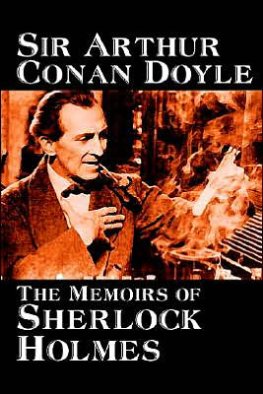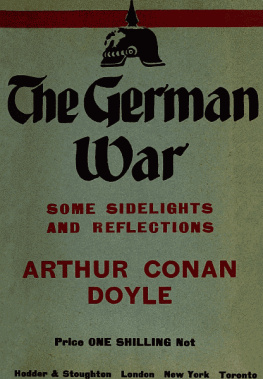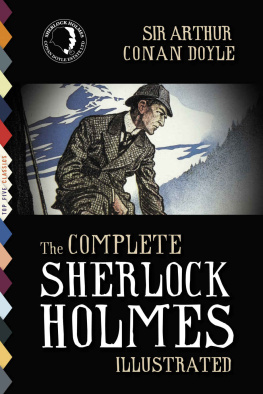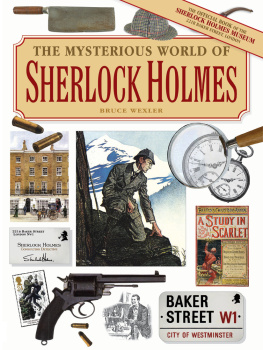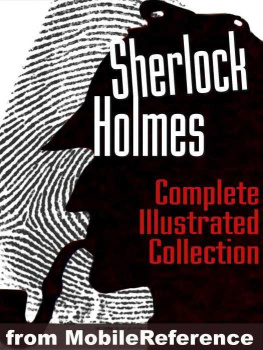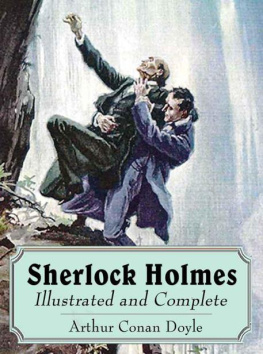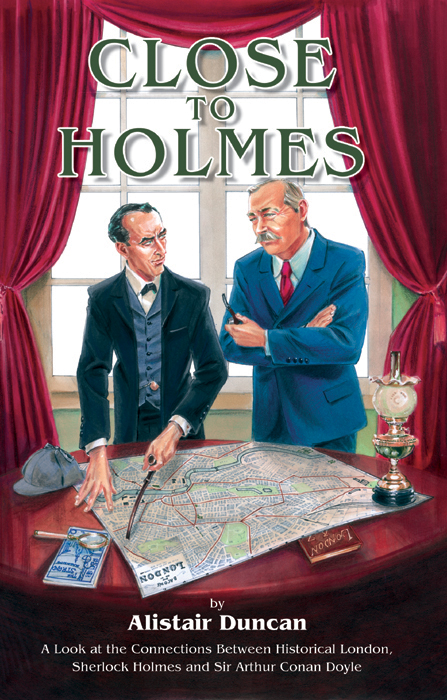
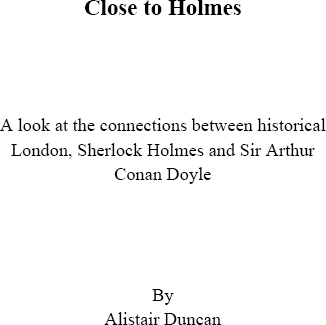
This book is dedicated to my wife (my own Mary Morstan) and to the memory of Pippa
Contents

About the author
Alistair Duncan is an I.T. Consultant and Sherlock Holmes enthusiast. Since the early 1980s he has been a fan of the Great Detective and in February 2008 he released his first book Eliminate the Impossible which was a look at the Sherlock Holmes stories and films. He is a member of the Sherlock Holmes Society of London and a member of the Conan Doyle (Crowborough) Establishment.
He lives with his wife in South London.

Acknowledgements
I would like to formally acknowledge the following:
Steve Ball, Catherine Cooke (Sherlock Holmes Collection: Marylebone Library, Westminster Libraries), Phil Cornell (Vice-President of the Sydney Passengers), Christine Corner et al. (Croydon Local Studies Library), Crystal Palace Library, John Hickman, Roger Johnson (Sherlock Holmes Society of London), Brian Pugh and Paul Spiring (authors of Bertram Fletcher Robinson - A Footnote to the Hound of the Baskervilles).
Efforts have been made to identify material still under copyright and seek permission for use. If I have overlooked any item the copyright holder is asked to contact the publisher so that the matter can be rectified in any future edition of this book.
Cover design by Staunch with central illustration by Phil Cornell.

Foreword
Of the dozen or so guides to Sherlock Holmess London there are two that I recommend to visitors: Arthur Alexanders Hot on the Scent and Thomas Wheelers Finding Sherlocks London. Now, thanks to Alistair Duncan, Ill have to add a third.
The point being that the three books complement each other. Mr Alexander offers thirty-five walking tours, all within an area stretching from Whitechapel in the east to Kensington in the west, and all enhanced with anecdote and description. Mr Wheeler deals with each story separately, directing the traveller to the nearest Underground station to each site, and pithily summarising the essential details.
Mr Duncan takes a different approach, as the subtitle of this book indicates. Most importantly, it is, I think, the first of its kind to give equal emphasis to those places associated with Arthur Conan Doyle. We may have wondered why so many of Sherlock Holmess cases took him south of the Thames, but Alistair Duncan makes all clear: that was the part of London that his creator knew best.
Reading Close to Holmes we feel that we are in the company of a knowledgeable, enthusiastic and witty friend. He guides us through most, but not all, of Holmesian London. He doesnt follow Irene Adler to St Johns Wood, or Charles Augustus Milverton to Hampstead, but perhaps that would have taken us too far from Conan Doyle. On the other hand, in mentioning The Priory School, an investigation that took place far from the capital, he advances an interesting and, as far as Im aware, original idea about the location of Mackleton in the Peak District.
In any case, I couldnt possibly be unenthusiastic about a book that features a photograph of the beautiful Maude Fealy! (Intrigued? Then read on)
Roger Johnson
Editor, The Sherlock Holmes Journal

Introduction
One of the great aspects of the Sherlock Holmes stories is that he operated in a world that still, to a certain extent, exists. When it comes to London this is even truer as a large number of the streets and buildings that existed in the time of Holmes still exist today. Some have changed significantly others have not but it is still very much possible to walk those streets and imagine what it might have been like to have walked them at the end of the nineteenth century.
The idea for this book came about when I was writing my first book - Eliminate the Impossible. I intended that it should include a section on locations in London with a connection to the stories. However it soon became apparent that this was a project in its own right and consequently it was left out of that book to be included in this volume.
It also seemed appropriate that this work should not limit itself to areas with links to Holmes but that it should also extend itself to his creator Sir Arthur Conan Doyle. As we look at each location we shall not only look at some of its history but we shall also see in what way it was linked to either Holmes or Conan Doyle and we will also look, in some cases, at the theories about these locations in relation to the Holmes stories.
One cannot hope to cover a subject such as this comprehensively and my choice of locations may seem odd to some readers. Many of the locations will be expected as to omit them would have been absurd (Baker Street for example). Similarly some will be unexpected and where this occurs I hope you will appreciate why they were included and learn something new.
I very much hope that this book illustrates how the London of Conan Doyle and Holmes both has and has not changed and that it also helps you to tread those streets yourself.
Alistair Duncan, London 2009

Baker Street
Arguably Baker Street is the ultimate destination for the Sherlock Holmes fan. As most Sherlockians are aware, in the time of Holmes 221b Baker Street did not exist as an address and the part of the street where the Sherlock Holmes museum is situated used to be referred to as Upper Baker Street. Interestingly, in his original manuscript for A Study in Scarlet, Conan Doyle described Holmes and Watson as living in Upper Baker Street but changed it to the regular Baker Street prior to publication. Naturally there has been much speculation as to the location of the house that Conan Doyle really had in mind.
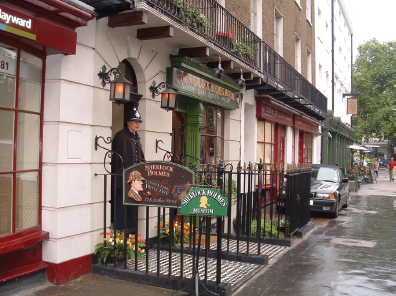
Sherlock Holmes Museum at 221b Baker Street (2007)
The initial reference to Upper Baker Street in the manuscript does lend some weight to the suggestion that Conan Doyle did have the address of the present museum in mind. The house is representative of the period and the layout both inside and out conforms very much (but not totally) to the descriptions provided by Conan Doyle throughout the stories. The museum managements belief that they occupy the real 221b is largely based on these similarities.
Next page


